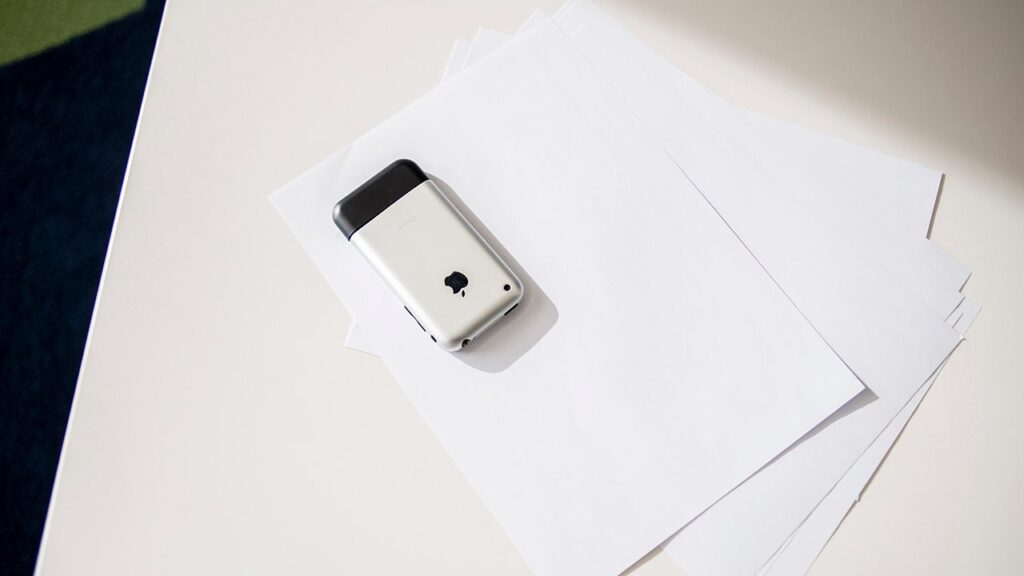Apple’s groundbreaking iPhone made its retail debut on June 29, 2007, at all 164 Apple retail stores in the U.S. Customers eagerly lined up at Apple retail stores nationwide to purchase the revolutionary smartphone, which was limited to up to two iPhones per customer on a “first-come, first-served basis,” as announced in a press release by Apple. The iPhone, first revealed by Apple CEO Steve Jobs on January 9, 2007, was one of the most highly anticipated gadgets of all time, despite being considered one of Apple’s worst-kept secrets.
Leading up to the official unveiling at the Macworld Expo, various tech blogs had published rumors containing details about the iPhone. In the days preceding the release date of June 29, 2007, hundreds of avid consumers camped outside Apple and AT&T stores, eagerly awaiting the arrival of the iPhone at a price tag of $600. During his keynote speech, Jobs described the iPhone as a “revolutionary and magical product” that was “literally five years ahead of any other mobile phone.” The first iPhone featured a pioneering user interface based on a multi-touch display, allowing users to control the device with just a tap, flick, or pinch of their fingers.
The original iPhone combined three devices into one handheld product, serving as a mobile phone, widescreen iPod, and internet browser. It was equipped with essential applications such as Calendar, Camera, Clock, Contacts, iPod, Maps, Messages, Notes, Phone, Photos, Safari, Stocks, Voice Memos, Weather, and Settings. Following its initial release, Apple launched the App Store on July 10, 2008, offering 500 applications to enhance the iPhone user experience. Despite its significant appeal, the iPhone initially did not achieve mainstream success due to its high price point.
Apple’s strategic decision to lower the price of the iPhone to $400 in 2007 helped boost sales, paving the way for the iPhone 3G in 2008. The introduction of the iPhone 3G, priced at $200 and offering access to a faster 3G network, catalyzed the smartphone’s exponential rise in popularity. Apple sold over 10 million units of the iPhone 3G worldwide within five months of its release, solidifying the iPhone’s status as a game-changer in the mobile phone industry.
Subsequent iterations of the iPhone, including the iPhone 4, iPhone 5, iPhone 6, and iPhone 7, featured incremental improvements in camera technology, screen resolution, and processing power. In 2017, Apple introduced the iPhone X, featuring a full-frontal screen and facial recognition technology. The iPhone 11 Pro and Pro Max, launched in 2019, were the first models to incorporate three cameras on the back, with the third camera allowing for ultrawide-angle photography.
In 2022, Apple unveiled the iPhone 14 Pro and Pro Max, equipped with enhanced cameras and new features such as Emergency SOS via Satellite. The iPhone 15 is highly anticipated for release in 2023, continuing Apple’s tradition of annual flagship smartphone launches. Apple’s innovative iPhones have solidified the company’s position as a global leader in the smartphone market, with over 2.3 billion units sold since 2007, generating substantial revenue and maintaining a significant market share. As one of the most valuable technology companies in the world, Apple’s iPhone remains a symbol of innovation and excellence in the ever-evolving realm of mobile technology.












